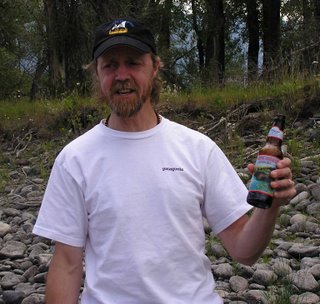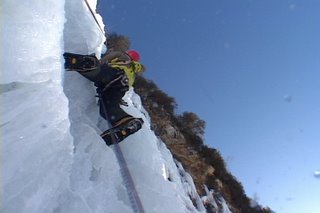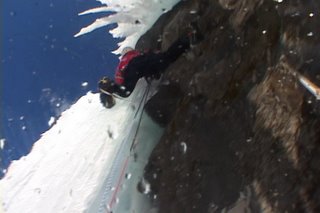Body Disposal Form

It's May. People have already begun dying on Everest in the mad rush to summit this, the world's highest mountain, before the monsoon season begins. Historically, May is thee time to summit. So, as May nears its end, climbers who have wagered relationships, jobs and hard-earned cash will do anything - including die - for that last chance at getting to the top. The bodies of those who lost the battle can be found throughout the Death Zone on Everest.
It was seven years ago, but I can remember like yesterday the experience of signing our team's Body Disposal Form. At the tail end of March, we were in Kathmandu, packing up our loads of gear and free stuff, food and personal items, stuffing them into mule bags, stacking them all on top of each other in the hallway. Our hotel looked like a mix between a college frat house on Saturday morning and an overstocked storage unit that had been packed in haste.
That afternoon, while engrossed in the challenge of packing, the expedition leader walks in and tosses a sheet on my bed. "You gotta sign this before we leave for Base Camp. It's the Body Disposal Form."
Let me get this straight. A form, to be signed, that options on just what I want 'the guys' to do with my body if I should die up there...that is, if they can find me, or even get to me.
Suddenly, this little game becomes reality. On previous expeditions we'd discussed the issue of death. But, we never really allowed it to become real. Talking about death on the mountains, what it's like to see dead bodies, all that stuff, gets talked about alot more at home. Friends and acquaintences frequently request stories about seeing bodies. But, on the mountain, during the real expedition itself, there is always a respectful hush around actually talking about death. We see the dead bodies up high. And, we walk past them silently, in deep respect for them.
By signing this flimsy little sheet of paper I was admitting, understanding, signing-off, on the absolute possibility that I could actually die up there, somewhere on the cold flanks of Mother Everest.
If my body was accessible, and getting to it would not put my fellow climbers in danger of their own demise, how would I prefer my body to be handled? (Please check the box next to your choice!)
1) Be tossed into a crevasse
2) Left where it was
3) Brought to Base Camp and burned on a funeral pire
4) Repatriated to family in the US
The first sounds as bad as death itself: frozen forever far from the rays of the sun seems an awful way to spend eternity. And, in the fact of being frozen solid, the chances of my body being around for that long was a distinct possibility...maybe with the possibility of popping up at the bottom of a glacier in 10,000 years.
The second: better than the first. At least birds can come and peck at me, or I could stand as a ghostly reminder to those who pass me that they'd better be very, very careful.
The third: it was the natural choice for me. Burned in Base Camp accompaid by Buddhist monks chanting prayers at a Puja ceremony. Afterwards, the team could resort to Scotch and cases of cheap Chinese beer. Why not? Celebrate. Further, it's an easy decision, because;
The fourth: repatriation. Consider this: it costs about $15,000 to get a body home. My wife would already have been pissed at me for dying and then further insulting her by leaving her and my son with a staggering bill. It could possibly rank up there with about the worst last-act of anybody's life. "Hello, M'am, yes, your husband's body is here. It's C.O.D. You'll need to write us a check for $14,256.73. Yes, that's right $14,256.73. Where would you like me to put it?"
Already this year on Everest at least five human beings with friends and family at home have tragically lost their lives. The season is early. Deaths at this stage are typically unheard of. But, as the season heats up, and we approach early May, climbers will be clamoring to get into position for a summit bid.
Get ready, things are going to get worse. I'm sorry for any who inflict upon their families the possibility of giving their own life for a dream that carries no intrinsic value. Except that is, for the Sherpas who work and climb with the westerners in order to support their families. Climbing teams should be fully responsible to pay these families any support and financial obligations necessary to lessen the blow.
Be safe. Climb well.







